What are 15-minute neighbourhoods?
15-minute neighbourhoods have had a bad press lately, as right-wing conspiracy groups have spread misinformation about what they are and what they are intended to achieve.

First things first: they are nothing to do with restricting people to a certain geographical area.
It’s quite the opposite: it’s about giving people choices, freedom and independence and removing existing restrictions and limitations on people’s lives.
An aspirational planning tool for social equity
The aspiration behind 15-minute neighbourhoods is that people should be able to access all the amenities they need – such as supermarkets, cafés, pubs, green spaces, schools, GP surgeries and pharmacies – within a 15-minute walk, cycle ride or scoot.
The 15-minute neighbourhood concept is essentially a planning tool intended to help people lead easier, independent and more fulfilling lives and create stronger communities; bringing basic amenities to people, rather than expecting people to travel long distances to those amenities by car or bus, incurring the costs of fuel or bus fare and taking a significant chunk of time out of their day stuck in traffic.
Applying this to new housing developments, this means local councils using their planning control powers to:
• mandate the building of new amenities within the development to serve the new residents, e.g. a school, health centre, play areas and shops;
• only allowing new housing to be built near existing amenities (that have sufficient capacity to serve the new residents) that can be easily accessed within a 15-minute walk, cycle ride or scoot;
• making the developer provide safe, convenient routes to reach existing amenities in neighbouring areas by non-car methods, e.g. by building or paying for new car-free routes or protected cycle lanes and footways on existing roads; and/or
• ensure the development is built so that it is easily accessible from all directions for people travelling by foot, cycle, mobility scooter or wheelchair, but motor traffic can’t drive through it.
Applying this to existing residential areas that are currently starved of key amenities, this means councils applying their available budgets and planning powers to:
• build currently ‘missing’ key amenities, e.g. a school, health centre, play areas and retail buildings that businesses can rent from the council at reasonable rates;
• ensure that existing available buildings are used to provide the amenities that people need, e.g. pharmacies and shops providing healthy and affordable food rather than fast-food outlets and betting shops;
• building safe, convenient routes to reach key amenities in neighbouring areas by non-car methods – which may involve building new car-free routes or protected and improved cycle paths and footways on existing roads;
• when there are small housing development applications within such areas, making developers build or pay for these interventions as a condition of granting planning permission.
Who benefits from 15-minute neighbourhoods?
15-minute neighbourhoods are of particular benefit to poorer people, disabled people, children and the elderly, who are less likely to be able to own or use a car due to cost, being physically or legally unable to drive themselves and/or not having someone available to drive them, and who can find themselves isolated, unable to access the amenities they need or forced to spend limited financial resources on taxi fare or bus fare if they live in areas that are not 15-minute neighbourhoods.
By removing the need to have a car to access key amenities, 15-minute neighbourhoods also make it possible for more households to live without a car, freeing people from expensive car-dependency, (see our article, ‘Entrenched car culture’ leaves millions of Britons in transport poverty).
They are also essential for the 32.1% of households in Oxford that have no car or van, (see our article, ‘ONS 2021 Census map reveals car ownership levels across Oxford).
15-minute neighbourhoods also benefit the wider public by removing the need for car journeys to access key amenities, thereby reducing pollution, congestion, rat-running and problematic parking throughout cities.
This is a good Twitter thread by Charlotte Baker on ‘how 15-minute neighbourhoods are a force for freedom, not oppression'.
What does Oxfordshire County Council say about 15-minute neighbourhoods?
20-minute neighbourhoods (based on 20-minute round-trips rather than one-way journeys) form part of Oxfordshire County Council’s Central Oxfordshire Travel Plan (COTP). This is what the Council’s ‘COTP brochure says about them (page 39):
Living Locally
The 20-minute neighbourhood concept encapsulates the living local principle and is based on enabling everyday facilities to be within a short return walk or cycle trip from home.
Large proportions of the area’s urban population are already within a short walking distance of a range of everyday facilities; however, this accessibility is not universal across the area.
With significant housing growth planned for the urban edge of Oxford, it is essential that improvements to the existing transport networks, including walking and cycling routes, based on the existing or proposed location of facilities, services and amenities, and living locally principles are embedded as part of new developments. Key to this is providing walking, cycling and public transport routes to and through district centres, and co-locating core facilities in close proximity.

(The “Local Planning Authority” in Oxford is Oxford City Council.)
15-minute neighbourhoods in Oxfordshire
The ‘Coalition for Healthy Streets and Active Travel (CoHSAT) has been promoting the concept of 15-minute neighbourhoods with a view to helping local communities and advocating for changes to council policy and practice, to stop the current trend of building-in car dependency to people’s everyday lives.
CoHSAT conducted an online survey of 450 Oxfordshire residents to identify the amenities that matter most to them, and those that are important but less vital. This showed a strong level of consistency across different areas, with the most frequently selected priority amenities being: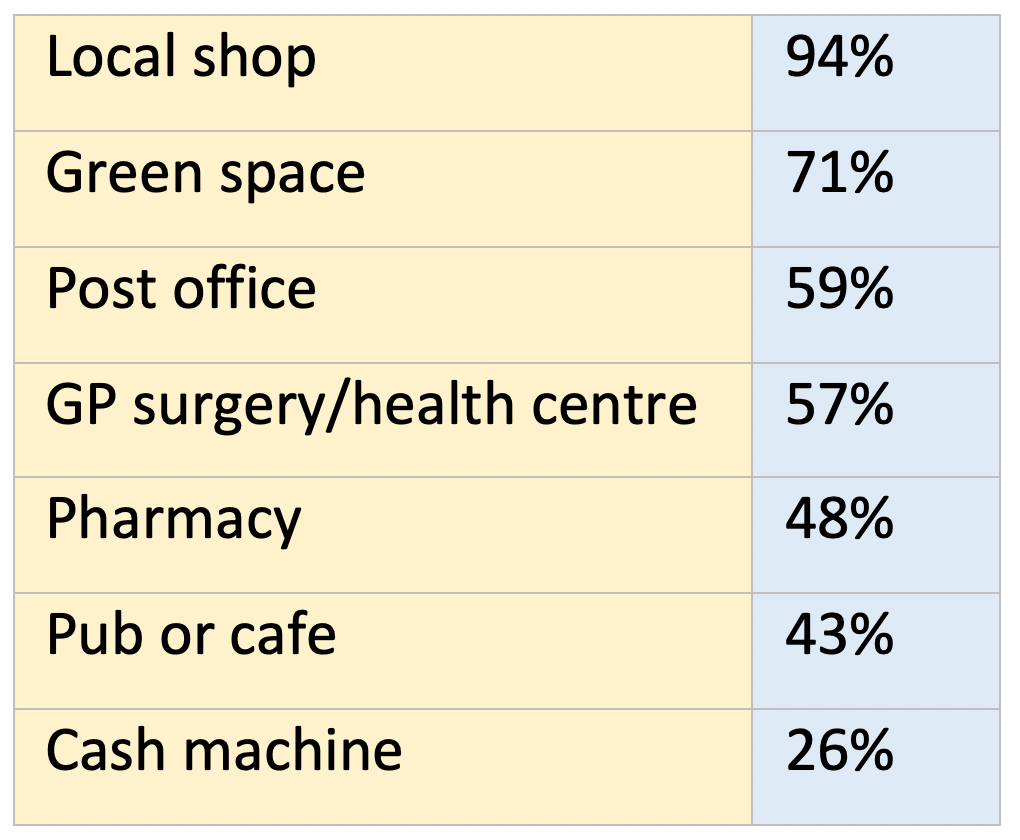
See CoHSAT’s survey report for full details of the results.
CoHSAT also analysed and mapped the walkability of streets in Oxford (see Walkability Index - CoHSAT), producing this map: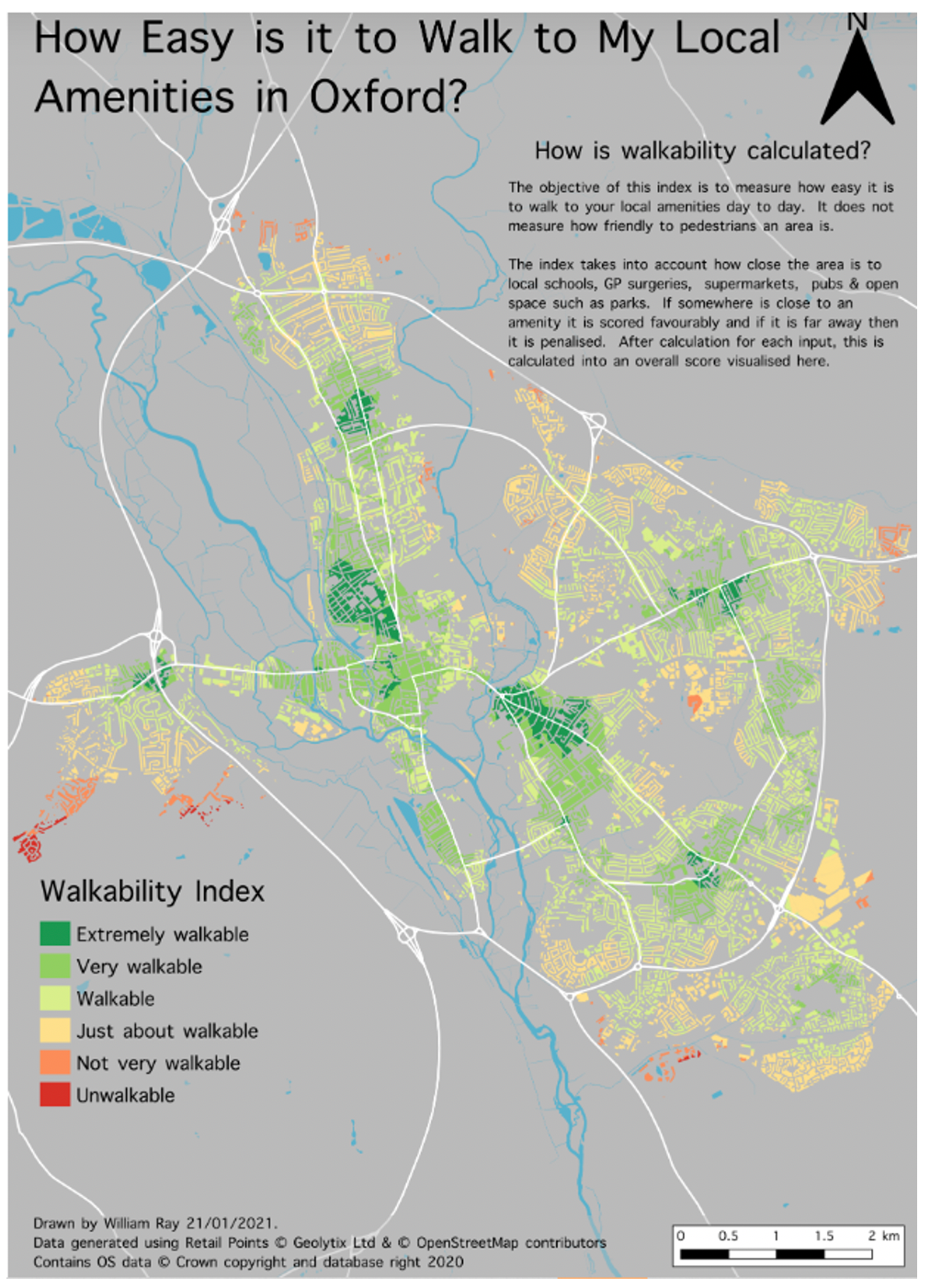
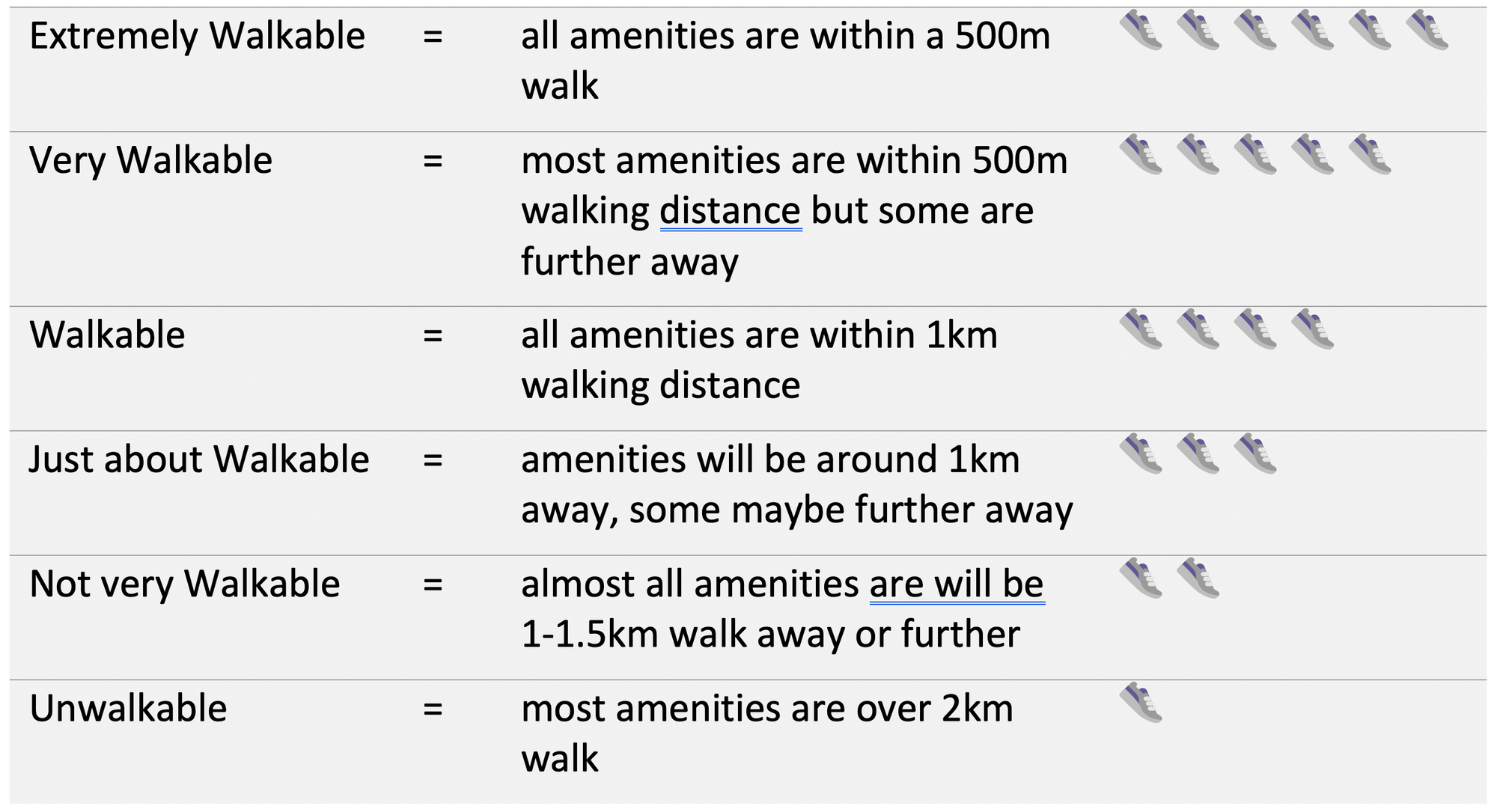
We can see from this zoomed-in view of the map that Headington fares pretty well already, with most roads falling within “extremely walkable”, “very walkable” or “walkable” areas:
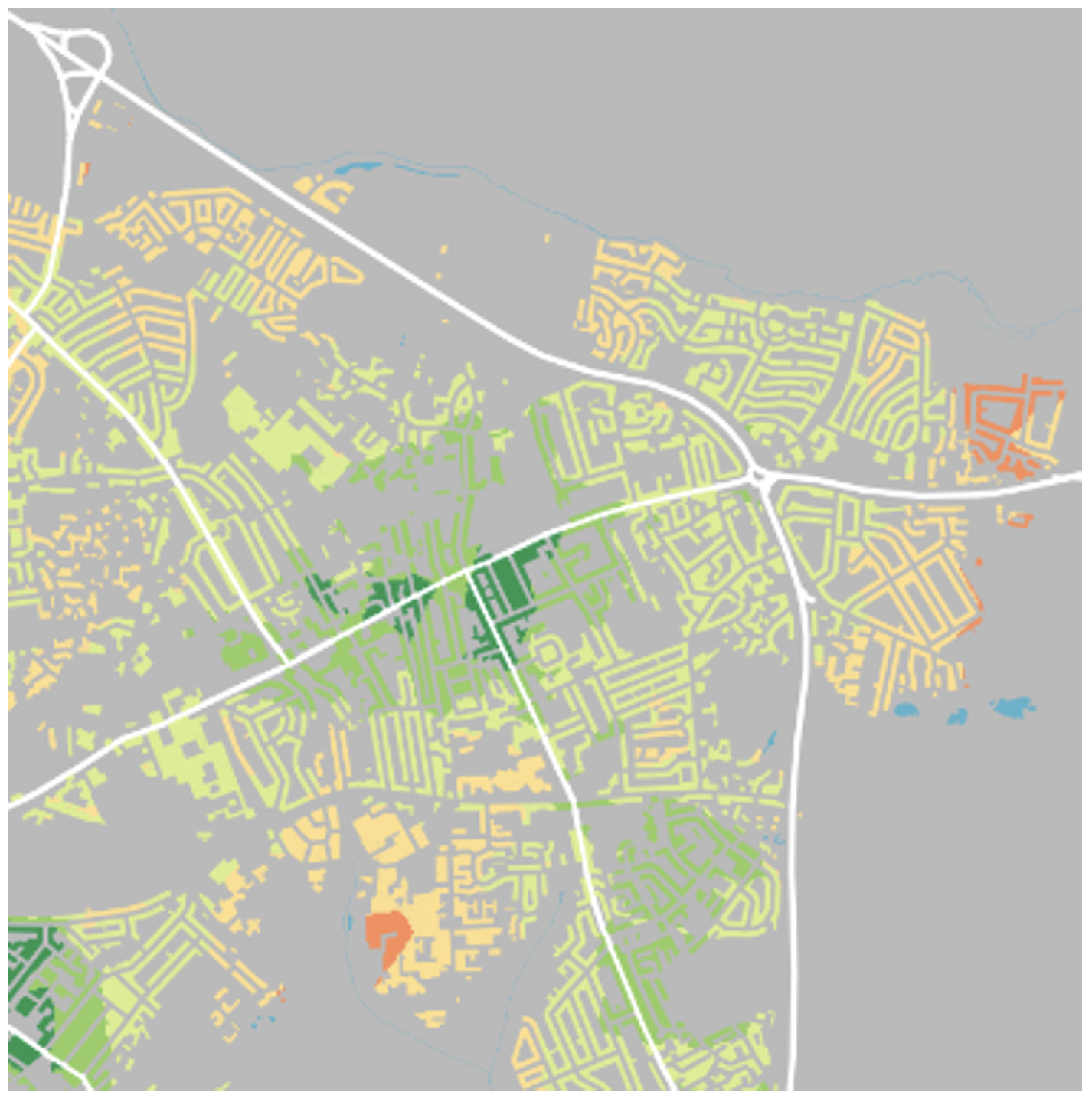
Most of the central Headington area is already a 15-minute neighbourhood, as is Wood Farm.
But not all areas are as fortunate:
• Sandhills fares pretty badly, with most of it being “not very walkable” and a few parts “just about walkable”.
• Around 2/3 of Risinghurst is “just about walkable”, with the roads at the very edge being “not very walkable”.
• Most of Barton is “walkable”, except for the new Barton Park and some roads on the Eastern edge of Barton.
• Much of Marston, Northway and Old Marston is only “just about walkable”, with a few bits on the edges being “not very walkable”.
And bucking the walkability trend in central Headington are:
• Highfield Avenue and Finch Close, which are only “just about walkable”. This is because although they are quite close to London Road, there is no direct active travel access onto Brookside or All Saints Road, so residents have to walk to Old Road first and then back on themselves down Bickerton Road or Valentia Road to access **London Road. **
• Some of the roads between Quarry Road and York Road, which fall into the “just about walkable” category. Larkfields fares badly, as it is a cul-de-sac with no active travel access onto York Road. Cummings Close suffers similarly. Whereas the alley way linking the end of Binswood Avenue to York Road seems to improve the walkability rating for some residents at that end of the road.
(Hence the importance of designing neighbourhoods so that they can be accessed from all directions by people travelling traveling by foot, cycle, wheelchair and mobility scooter, whilst preventing through access by motor vehicles.)
As observed in our article ONS 2021 Census map reveals car ownership levels across Oxford, unlike most other parts of the UK, there doesn’t seem to be a correlation between income and car ownership in Oxford, which seems to be the case for the Headington area.
However, there does seem to be a correlation between car ownership levels and how walkable an area is, with higher levels of car ownership in the areas that are less walkable, such as Marston, Sandhills and Risinghurst:
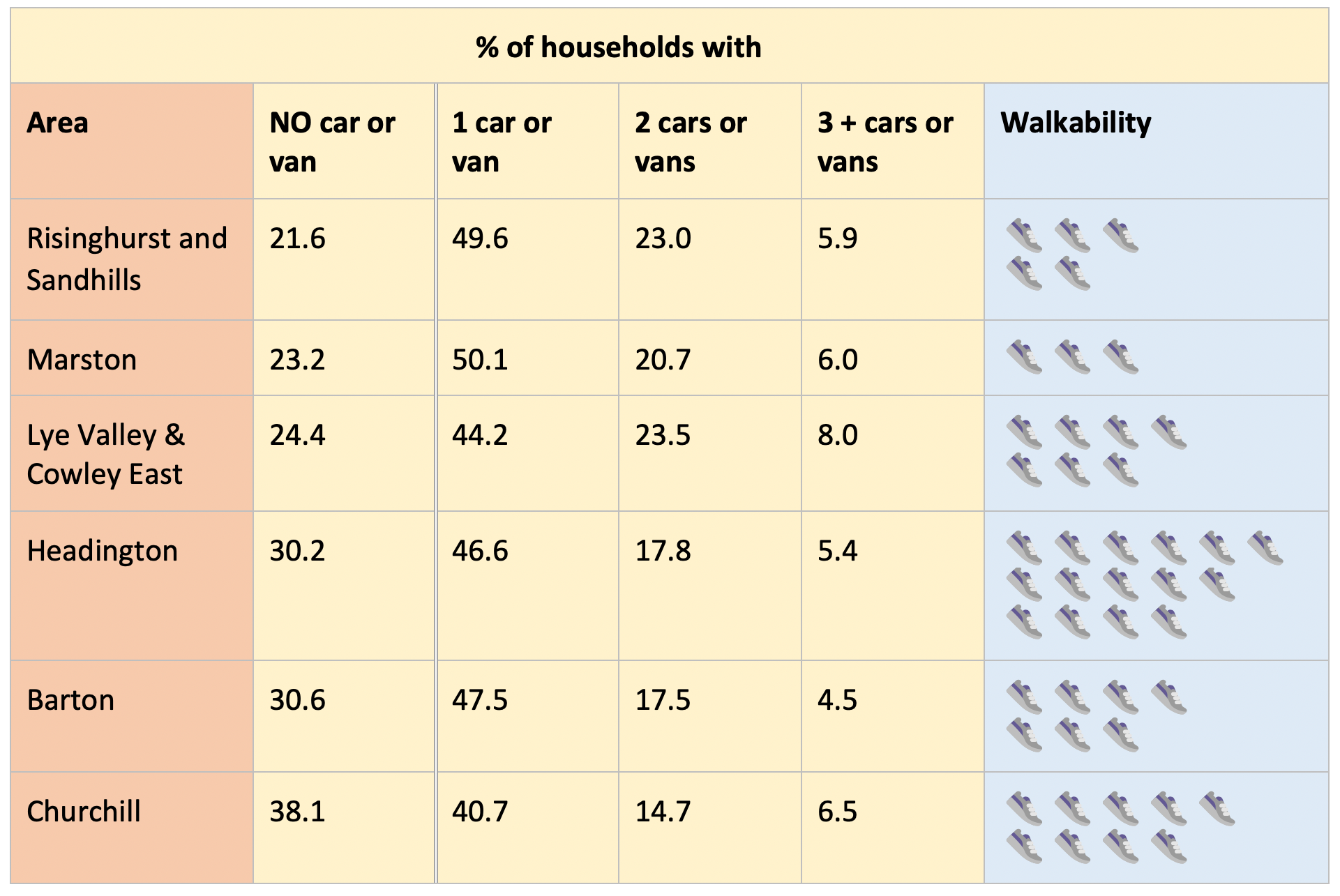
Why do we want 15-minute neighbourhoods?
By aspiring to have 15-minute neighbourhoods across Oxfordshire, the Council and the various campaign groups who support this concept basically want all Oxfordshire residents, of all ages and abilities and regardless of financial resources, to have the same benefits that we in central Headington have – with the shops, health services, schools, parks, clubs, pubs, cafes and community centres we need to lead happy and healthy lives, all within easy reach.
Further reading
This Guardian article looks at why “The frightening prospect of greener, people-friendly streets and convenient amenities has sent the online right – and Tory MPs – into a tailspin”: In praise of the ‘15-minute city’ – the mundane planning theory terrifying conspiracists.
This Forbes article addresses the recent conspiracy theories focussed on 15-minute neighbourhoods, based on an interview with the person who coined the concept: 15-Minute-City Conspiracy Theories Insane Says 15-Minute-City Creator.
This Guardian article looks at the link between inequality and the recent conspiracy theories: Tackling the 15-minute cities conspiracy means fixing inequality.
This article in Conservative Home asserting that 15-minute cities are not a socialist plot but a repackaging of a timeless ideal: Fifteen-minute cities are not a socialist plot.
This article in Slate: 15-minute city conspiracy theory: How Oxford's traffic plan inspired a global right-wing freakout.
Our website post from December 2021 about the CoHSAT 15-minute neighbourhood survey: A return to the 15-minute neighbourhood? Your views needed.
